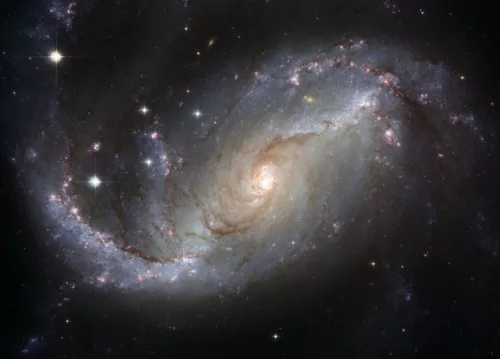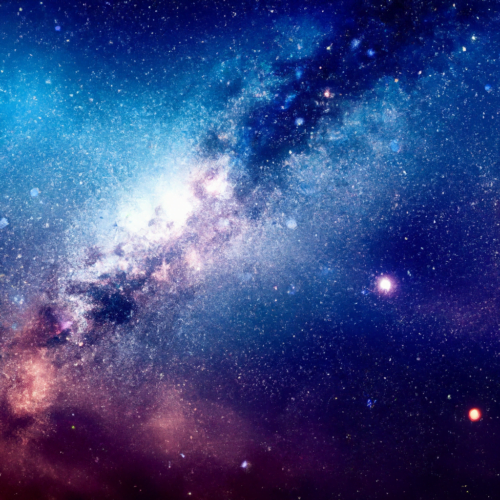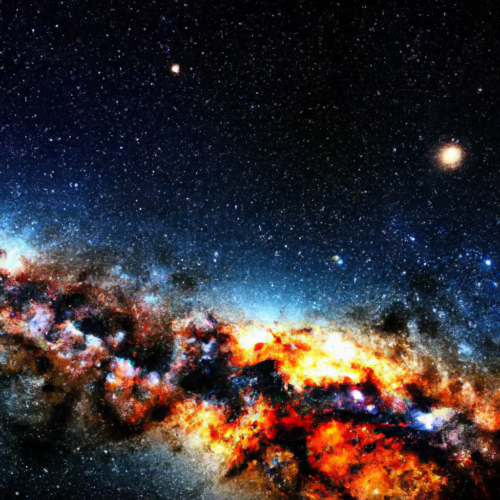Imagine staring up at the night sky, captivated by the twinkling lights that seem to go on forever. Amongst those lights are stars and planets, but how can you tell them apart? It may seem like a daunting task, but fear not, for there are several key distinctions that can help you discern whether you’re gazing at a distant star or a neighboring planet. In this article, we will explore the various characteristics that differentiate these celestial bodies, allowing you to unlock the secrets of the night sky and become an expert stargazer. So, grab your telescope and prepare to unravel the mysteries of the cosmos!
Table of Contents
How Can I Spot The Difference Between Stars And Planets?
If you’ve ever gazed up at the night sky and wondered whether you’re looking at a star or a planet, you’re not alone. Distinguishing between these celestial objects can be tricky, but with a little bit of understanding and observation, you can learn to spot the difference. In this article, we will explore various factors that can help you differentiate between stars and planets, including size, brightness, motion, color, twinkling, location, telescopes, and observation tips.
Understanding Stars
Before we delve into how to differentiate between stars and planets, let’s take a moment to understand what stars actually are. Stars are gigantic, glowing balls of gas that produce heat and light through a process called nuclear fusion. They are formed from clouds of gas and dust that collapse under their own gravity.
Star Formation
Stars are born from giant molecular clouds, which are vast regions of interstellar gas and dust. The collapse of these clouds due to gravitational forces causes the gas to heat up and forms a protostar. As the protostar continues to accumulate mass, its core temperature increases, eventually reaching a point where nuclear fusion can occur.
Nuclear Fusion
Nuclear fusion is the process through which stars produce energy. In the core of a star, hydrogen atoms collide and fuse together to form helium. This fusion releases an enormous amount of energy in the form of light and heat. It is this energy that makes stars shine brightly in the night sky.
Classification of Stars
Stars come in various sizes, colors, and temperatures. Astronomers classify stars based on their spectral characteristics, which determine their color and temperature. The classification system, known as the stellar classification, categorizes stars into different types such as O, B, A, F, G, K, and M. Each of these types has distinct characteristics that help us understand their composition and behavior.

Understanding Planets
While stars captivate us with their radiant glow, planets have their own unique charm. Planets are celestial bodies that orbit around a star and do not produce their own light. Instead, they reflect the light emitted by the star they orbit. Unlike stars, planets do not undergo nuclear fusion and are composed of rock or gas.
Formation of Planets
Planets are formed from the leftover materials that did not become part of the star during its formation. As the protostar gathers mass and forms a disk-shaped structure, known as a protoplanetary disk, the remaining gas and dust gradually come together to form planets through a process called accretion.
Types of Planets
There are two main types of planets: terrestrial planets and gas giants. Terrestrial planets, like Earth, are rocky and have a solid surface. They are often smaller and closer to their parent star. On the other hand, gas giants, like Jupiter and Saturn, are composed mainly of hydrogen and helium gases. They have no solid surface and are generally larger and farther away from their parent star.
Characteristics of Planets
Planets have their own unique characteristics that distinguish them from stars. They vary in size, composition, atmosphere, and even the presence of moons. Understanding these individual characteristics can be helpful in differentiating planets from stars.
Size
When observing celestial objects, size can be an important factor in distinguishing between stars and planets. Stars, being much larger than planets, appear as mere points of light in the night sky, while planets often appear as small discs.
Size Comparison
Stars can vary greatly in size, from relatively small ones like red dwarfs to massive ones like blue supergiants. To put things into perspective, the largest known star, UY Scuti, is estimated to be over 1,700 times the size of our Sun. In contrast, planets like Jupiter, the largest planet in our solar system, are significantly smaller, although still many times larger than Earth.
Apparent Size
When observing the night sky, the apparent size of an object refers to how large it appears from our perspective on Earth. Because stars are incredibly far away, even the largest ones appear as mere points of light. Planets, however, being much closer to Earth, appear larger and can sometimes be seen as small discs with the help of telescopes or even the naked eye under ideal conditions.

Brightness
Another factor to consider when distinguishing stars from planets is their brightness. While stars can vary in their intrinsic and apparent brightness, planets, being reflective bodies, have a more consistent and often less intense glow.
Intrinsic Brightness
The intrinsic brightness of a celestial object refers to the total amount of light it emits. Stars, being luminous objects that generate their own light, can vary greatly in intrinsic brightness. The brightness of stars is measured using a magnitude scale, where lower numbers represent brighter stars. For example, the brightest star in the night sky, Sirius, has a magnitude of -1.46, while fainter stars have positive magnitudes.
Apparent Brightness
The apparent brightness of a celestial object, on the other hand, refers to how bright it appears from Earth. Even though stars may be intrinsically brighter, their immense distance makes them appear dimmer in the night sky. Planets, being much closer, have a more consistent apparent brightness and can often outshine nearby stars. Some planets, like Venus, can even be visible during daylight due to their high apparent brightness.
Motion
The motion of celestial objects can also provide clues in differentiating between stars and planets. While stars generally appear fixed in the night sky, planets exhibit their own distinct patterns of motion.
Fixed Positions
Stars, for the most part, appear fixed in the night sky due to their immense distance from Earth. Over the course of the night, stars will appear to move across the sky as the Earth rotates, but their relative positions to each other remain largely unchanged. This is why certain constellations can be used as a guide for navigation throughout the year.
Planet Motion
Unlike stars, planets have their own orbital motion around a star. As the Earth and other planets move in their respective orbits, planets appear to slowly shift their position against the backdrop of stars. With careful observation over a period of weeks or months, you can track the apparent motion of a planet and distinguish it from the fixed positions of stars.
Stellar Motion
While most stars appear fixed in the night sky, some stars do exhibit their own motion. This motion, known as proper motion, is caused by the individual star’s movement through space. However, proper motion is generally not noticeable with the naked eye and requires precise measurements over long periods to detect.

Color
Color is another characteristic that can aid in differentiating between stars and planets. While stars exhibit a range of colors due to their composition and temperature, planets often have a more limited color palette.
Star Colors
Stars come in a variety of colors, ranging from blue and white to red and yellow. This color variation is a result of the star’s surface temperature. Hotter stars, like blue supergiants, appear blue or white, while cooler stars, like red dwarfs, appear red. The color of a star can give us insights into its temperature and age.
Planet Colors
Compared to stars, planets have less variability in color. This is because the color of a planet is primarily determined by its atmosphere and the composition of its surface. For example, Mars appears reddish due to the presence of iron oxide, while Jupiter and Saturn have a yellowish hue caused by the ammonia in their atmospheres. Weather conditions on a planet can also affect its color, with features like clouds or storms altering its appearance.
Twinkling
One characteristic that is often associated with stars is twinkling. The twinkling of stars is caused by the Earth’s atmosphere, which causes the light from stars to scatter. In contrast, planets, being closer to Earth, appear more steady and do not exhibit significant twinkling.
Star Twinkling
As starlight enters the Earth’s atmosphere, it undergoes refraction, which leads to the twinkling effect. The varying densities of the atmosphere cause the light to scatter, resulting in the flickering appearance of stars. This twinkling effect can make it difficult to observe stars in detail, especially without the aid of a telescope.
Non-Twinkling Planets
Planets, being much closer and larger in apparent size, are less affected by the Earth’s atmosphere. As a result, their light is less prone to scattering and they appear more steady in the night sky. This stability makes it easier to observe the features of planets, such as their shape and surface details, even with a basic telescope or binoculars.

Location
The location of celestial objects can also provide valuable information in distinguishing between stars and planets. Stars and planets have different patterns of movement across the night sky, which can help you identify them more accurately.
Constellations
Constellations are groupings of stars that form recognizable patterns in the night sky. They have been used by navigators and astronomers for centuries as a way to navigate and map the heavens. By familiarizing yourself with the different constellations, you can easily identify stars and their relative positions as they traverse the night sky.
Star Patterns
Stars within constellations have distinct patterns, which can aid in identifying them. These patterns can be helpful in distinguishing stars from planets, especially when observing over time. While stars will maintain their relative positions within a constellation, planets will exhibit their own independent motion across the background of stars.
Planetary Positions
Unlike stars, planets do not remain fixed within a single constellation. As planets orbit their parent star, they gradually change their position with respect to the background stars. By keeping track of the changing positions of planets, you can differentiate them from stars and identify their unique patterns of motion.
Telescopes
If you want to delve deeper into observing stars and planets, investing in a telescope can greatly enhance your experience. Telescopes allow us to see celestial objects with more clarity and detail, providing insights into their size, composition, and even the presence of moons or rings.

Observation Tips
Now that you have a better understanding of the various factors that distinguish stars from planets, here are some observation tips to help you spot the difference more easily.
Sky Conditions
Choose clear, dark nights with minimal light pollution for optimal stargazing. Light pollution from streetlights and cities can make it difficult to spot faint celestial objects, including stars and planets. Find a location away from city lights and give your eyes time to adjust to the darkness for a better view of the night sky.
Timing
Timing is crucial when observing stars and planets. Some celestial objects are only visible during specific times of the year or at certain hours of the night. Research the best times to observe specific planets or constellations and plan your observation accordingly. You can consult star charts or astronomy apps to help you determine the optimal viewing times and locations.
Identifying Celestial Objects
The more you familiarize yourself with the night sky, the easier it becomes to identify celestial objects. Start by learning the main constellations and their notable stars. Once you can confidently identify these, you can begin to track the positions of planets and differentiate them from stars. Observing regularly and keeping a journal of your observations can also help improve your ability to spot and identify these celestial objects.
In conclusion, spotting the difference between stars and planets can be an exciting and rewarding experience. By considering factors such as size, brightness, motion, color, twinkling, location, and utilizing telescopes and observation tips, you can confidently differentiate between these celestial objects and explore the wonders of the night sky. So, next time you gaze up at the stars, take a moment to appreciate the vastness of the universe and the diversity of its celestial inhabitants. Happy stargazing!
